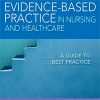What should we stop doing in the ICU?
healthmanagement.orgIntensive care is an interesting specialty. From all the early excitement in the 1970s, passing through two decades of intensive physiological use at the bedside, intensive care landed on the rough ground of modern randomized controlled trials (RCTs) in the late 1990s and early 2000s.
The increasing number of critically ill patients coupled with new monitoring devices and important funding both from governmental and private agencies (including pharmaceutical companies) fostered research. In the early 2000s, the panorama looked promising, with positive trials coming out on a frenetic basis (Bernard 2001; Rivers 2001). Regrettably, the initial enthusiasm was followed by a wave of negative results (Ranieri 2012; PRISM Investigators 2017).
Many interventions that seemed promising in the early 2000s were sequentially disproved or proved to be harmful, which has been the basis for the rationale of limiting excesses of interventions and treatments in the critically ill, the so-called “doing less”.

















